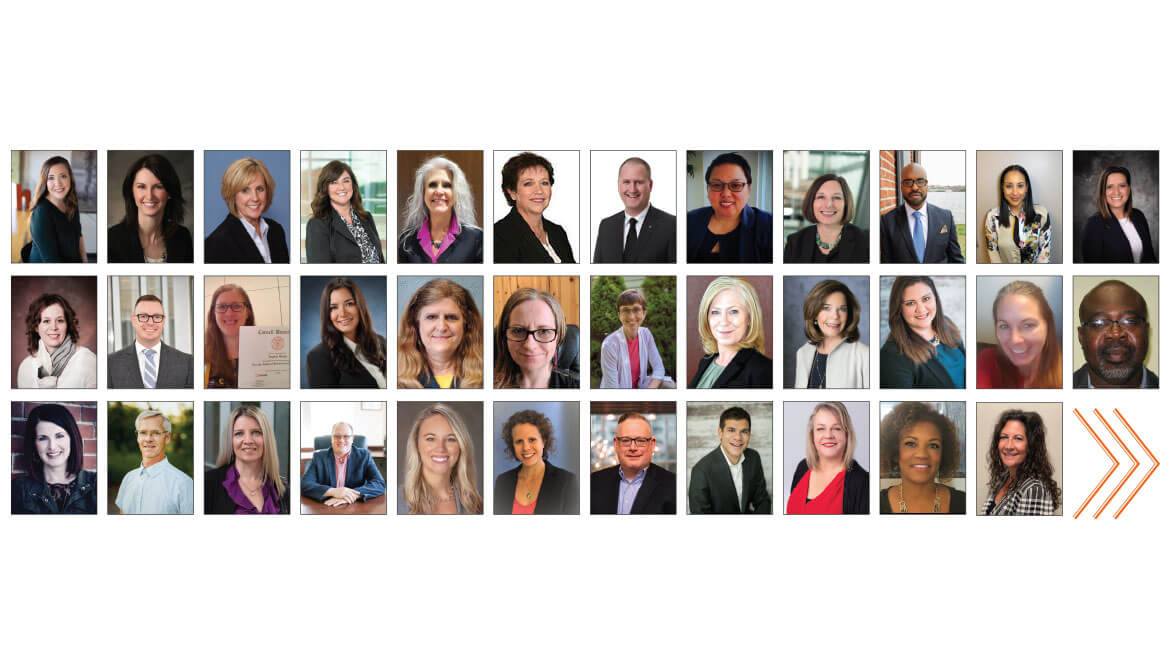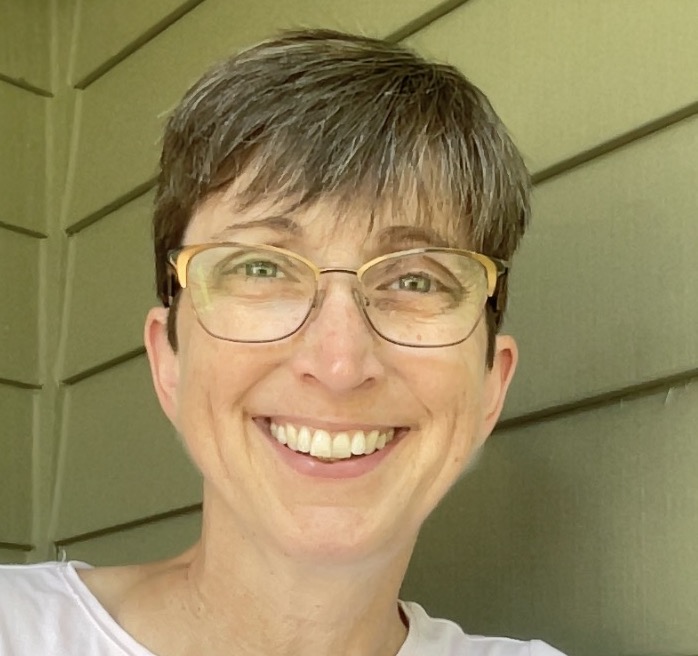9 minutes
CUES member graduates of DEI Cornell certificate program share top takeaways.
Do your team members feel they can be their authentic selves at work?
Before you say yes too quickly, ask yourself these deeper questions—or better yet, ask them:
Can your team members look at your leadership ranks and see people similar to them? Seeing someone of their own race on your executive team or on your board signals that they have an opportunity to grow and advance.
Are they comfortable displaying personal photos in their workspaces or Zoom windows? Think of how your team would react to photos that might depict a family headed by two men or by two women—or that show the activity of members of a different social class from the one that is most common among your staffers.
Do they feel individually valued for the ideas they offer in meetings? People in some organizations report that they are consistently asked to speak on behalf of “all young people” or “all women” or some other demographic group, rather than just to share their best ideas.
The more questions like this you can answer “yes” to, the more likely it is that your credit union is off to a good start in creating an organizational climate that includes psychological safety—a key foundation for a climate where people can be their authentic selves at work.
When CUES asked my classmates from this spring’s inaugural offering of Diversity, Equity and Inclusion Cornell Certificate Program about their top takeaway from the course, several cited a better understanding of psychological safety. This result isn’t surprising, as the Cornell course provided research-based evidence that psychological safety helps to drive high levels of employee engagement, which in turn helps to drive solid business performance.
My classmates also cited as top takeaways a better understanding of the terms “diversity,” “equity” and “inclusion”—and how the three are inextricably intertwined. And they expressed in their responses how they were now more motivated than ever to create inclusive climates for their organizations. Here are their thoughts in their own words.
Laying the Foundation
Several of my classmates described applying the idea of psychological safety to both employees and leaders of their credit unions right away.
“My top takeaway from this program is the vital role that psychological safety of employees plays in the overall success of the credit union’s DEI journey,” writes CUES member Raquel Crossley, recruiter at $4.3 billion Northwest Federal Credit Union, Herndon, Virginia. “With the help of this program, I have been able to assess the current climate of the overall organization and look forward to providing the same information and resources to our management team to ensure they are also aware and creating spaces where employees have high levels of psychological safety, while feeling that they are both seen and heard for their individual differences.”
CUES member Chelsea Schaberg writes: “It is tough to choose just one top takeaway from the Cornell diversity, equity and inclusion certificate program, but one item I plan to apply immediately is integrating psychological safety and inclusion practices into our leadership trainings and performance appraisal process.
The certificate course taught the importance of supporting leaders at all levels in understanding their key role in building and sustaining an organization’s environment of inclusion. “Since the program, we have already started communication to leaders on these themes and are working on training and additional support to help them on their inclusion journey,” says Schaberg, AVP/human resources at $6.1 billion Michigan State Federal Credit Union, East Lansing.
Clarifying Meaning
A common way people are encouraged to think about the meanings of the terms “diversity,” “equity” and “inclusion” is that diversity is where everyone is invited to the party, equity is where everyone gets to contribute to the playlist, and inclusion is when everyone has the opportunity to dance. The Cornell certificate program did an excellent job of making connections between these three key concepts and grounding them in day-to-day actions.
“My biggest takeaway was something that was said in one of our live sessions: ‘Diversity counts people, inclusion makes people count,’” writes CUES member Blessing Allison, director of learning and development at $1.2 billion Red River Employees Federal Credit Union, Texarkana, Texas. “Sometimes diversity and inclusion can become mucky,” she adds, “especially when first diving in. But this clearly states the importance of both diversity and inclusion as well as the role each of them plays in an organization.”
Similarly, CUES member Amanda Hallmark’s No. 1 takeaway from the program was “learning about how diversity, equity and inclusion are deeply intertwined and connected, how the small actions and behaviours we implement—right now, right here—make, support and lead to big change.” Hallmark is talent development manager at $771 million Integris Credit Union, Prince George, British Columbia.
Inspiration for the Journey
One of the things that teach the most are stories, as evidenced by these comments from CUES member Brandy Phillips, VP/mortgage lending and co-chair of the DEI Council at $4 billion TDECU, Lake Jackson, Texas.
“During one of our live sessions, our professor shared a story about a man who had friends that were impacted in the Pulse nightclub shooting” in Orlando in 2016, Phillips writes. “This man said that no one in his office acknowledged him ... and how isolated and alone that made him feel.
“This story helped me realize we can have an impact on inclusion and belonging simply by ... having the courage to speak up and say, ‘How are you doing?’’ she continues. “To me, that was pretty powerful, and it doesn’t cost a dime, but the impact is priceless.”
CUES member Trevor Beaton, chief people and innovation officer at $1.2 billion Synergy Credit Union, Lashburn, Saskatchewan, also has a clear vision for his pathway forward.
“It is hard to chose one key takeaway from the DEI certificate course,” he writes. “It allowed me to reflect in many aspects to be a stronger leader, to model a better example. I spent a good deal of my career creating a profile for myself by not being afraid to speak up and provide my opinions. A key takeaway for me: to create a more inclusive environment requires me to listen first instead of speaking first.
“I also want to ensure we hear from everyone in the group and will support them in getting their ideas and thoughts on the table,” he adds. “I look forwarding to working on my personal skills and modeling a better example for others to foster a more inclusive environment.”
More DEI Cornell Certificate Program Takeaways
You can get more takeaways from my CUES member classmates in their own words by reading “Take Time to Learn” and the text below.
Lea Ammerman, COO, $5.7 billion Michigan State University Federal Credit Union, East Lansing, Michigan
My top takeaway from the program was related to the concept of belongingness the significant role that has with inclusion. Each person’s uniqueness being valued, being able to be themselves, and being treated as an insider are significantly important to their psychological safety, interpersonal and cultural competence, engagement, satisfaction, commitment, and psychological and physical well-being. All of these contribute to their professional success.
Shelli Bardsley, CSE, CCE, chief administrative officer, $6.7 billion Idaho Central Credit Union, Pocatello
Learning the importance of creating a psychological safe workplace was very beneficial and will lead to improved team member engagement at my credit union.
April Clobes, president/CEO, $5.7 billion Michigan State University Federal Credit Union, East Lansing, Michigan
I appreciated the many tools that were provided that can be utilized in our organization. I appreciated meeting many credit union professionals all committed to creating a more inclusive credit union industry.
Marnie Gerkhardt, emerging development leader, $7.5 billion Ent Credit Union, Colorado Springs
My biggest take away was the importance of psychological meaningfulness, psychological safety and psychological availability. The program gave me an understanding of how these three drivers are the foundation of DEI work and actionable tools to improve them. I also thoroughly enjoyed discovering the impacts of Jane Elliot’s “Blue Eyes/Brown Eyes” experiment. She’s my hero!
Roberta Kozlowicz, CSE, CCE, EVP/COO, and Laura Leschewski, HR/recruiting manager, $480 million DuPage Credit Union, Naperville, Illinois
Prior to taking the eCornell class, we did not have a lot of working knowledge on what diversity and inclusion entailed. Now, with a much better understanding on how D&I impacts the workforce and its dynamic, the credit union will devote the time and resources to integrate D&I into our workplace.
We now understand the importance of knowing how the credit union is perceived by our team as it relates to D&I. Our first step will be to conduct a formal survey by engaging an outside resource. We hope to gain key insights in priority areas and will be transparent with our team regarding the results on how well, or not so well, the credit union is doing.
We also understand, in order for the organization to be successful, first and foremost, we need gain the commitment from our leadership team. We are going to address this by educating them on the concepts around diversity and inclusion and how it will be integrated into our organization over time.
Finally, this course provided insight on the importance of creating a safe environment so that individuals can bring their authentic self to work every day.
Jennifer Kuhn, VP/HR, $5.9 billion Bank-Fund Staff Federal Credit Union, Washington, D.C.
As a CU that supports international finance organizations, embracing diversity is at the core of who we are as a membership, but diversity does not equal inclusivity. Having the freedom to be your authentic self could be perceived as privilege to some. We are actively teaching leaders the importance of being authentic and vulnerable in order to connect with their team members. We must also balance that with actively working to build a culture of trust so that all can be empowered to be their true selves.
Kelcey Stevens, CWS CFEI CRC CPC, organizational learning and leadership adviser, $1.6 billion Sharonview Federal Credit Union, Fort Mill, South Carolina
The role coaching plays in creating an inclusive environment by helping team members/leaders self-realize how they are fostering or hindering an inclusive climate and helping each team member to understand the role they play in creating an inclusive culture within the organization. cues icon
Senior Editor of Credit Union Management Lisa Hochgraf was honored to join the inaugural class of Diversity, Equity and Inclusion Cornell Certificate Program.






